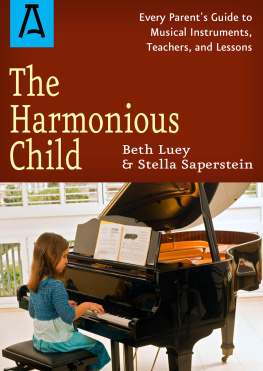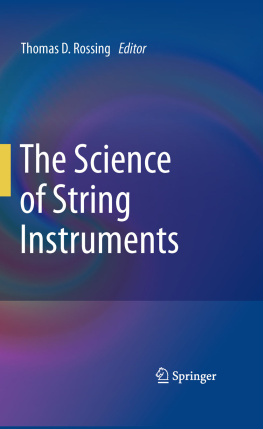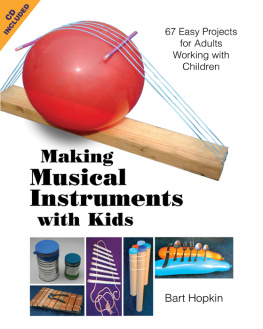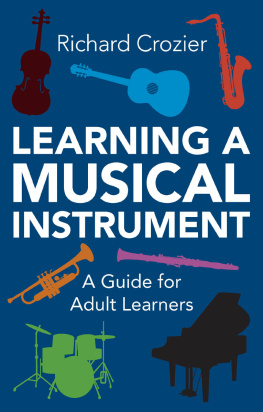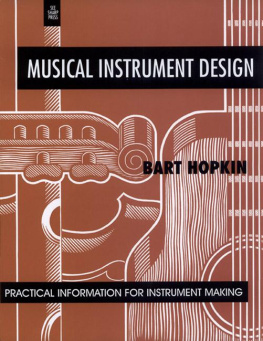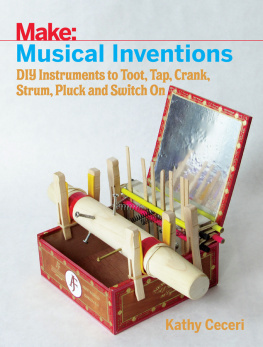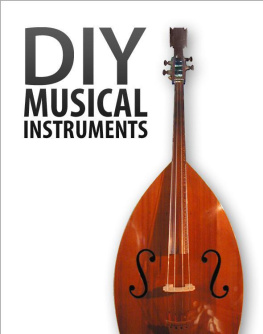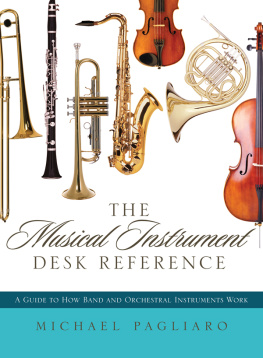The Manual of Musical Instrument Conservation
This is the first book to combine museum-based conservation techniques with practical instructions on the maintenance, repair, adjustment, and tuning of virtually every type of historical musical instrument. As one of the world's leading conservators of musical instruments, Stewart Pollens gives practical advice on the handling, storage, display, and use of historic musical instruments in museums and other settings, and provides technical information on such wide-ranging subjects as acoustics, cleaning, climate control, corrosion, disinfestation, conservation ethics, historic stringing practice, measurement and historic metrology, retouching, tuning historic temperaments, varnish, and writing reports. There are informative essays on the conservation of each of the major musical instrument groups, the treatment of paper, textiles, wood, and metal, as well as historic techniques of wood- and metalworking as they apply to musical instrument making and repair. This is a practical guide that includes equations, formulas, tables, and step-by-step instructions.
STEWART POLLENS served between 1976 and 2006 as the conservator of musical instruments at the Metropolitan Museum of Art, where he restored and maintained a collection of over 5000 instruments. He is the author of over eighty scholarly articles and six books, including Forgotten Instruments (1980), The Violin Forms of Antonio Stradivari (1992), The Early Pianoforte (1995; reprinted 2009), Giuseppe Guarneri del Ges (1998), Franois-Xavier Tourte: Bow Maker (2001), and Stradivari (2010), which won a 2011 Choice award for Outstanding Academic Title. In 1997 he was the recipient of the American Musical Instrument Society's Nicholas Bessaraboff Prize for The Early Pianoforte , a study of the invention and early history of the pianoforte. He is also a contributor to The New Grove Dictionary of Music and Musicians and writes frequently for The Strad .
The Manual of Musical Instrument Conservation
Stewart Pollens
University Printing House, Cambridge CB2 8BS, United Kingdom
Cambridge University Press is part of the University of Cambridge.
It furthers the University's mission by disseminating knowledge in the pursuit of education, learning and research at the highest international levels of excellence.
www.cambridge.org
Information on this title: www.cambridge.org/9781107077805
Stewart Pollens 2015
This publication is in copyright. Subject to statutory exception and to the provisions of relevant collective licensing agreements, no reproduction of any part may take place without the written permission of Cambridge University Press.
First published 2015
Printed in the United Kingdom by TJ International Ltd, Padstow Cornwall
A catalogue record for this publication is available from the British Library
Library of Congress Cataloguing in Publication data
Pollens, Stewart.
The manual of musical instrument conservation / Stewart Pollens.
pages cm
Includes bibliographical references and index.
ISBN 978-1-107-07780-5 (Hardback : alk. paper) 1. Musical instrumentsConservation and restoration.
2. Musical instrumentsMaintenance and repair. I. Title.
ML460.P7 2015
784.1928dc23 2015019710
ISBN 978-1-107-07780-5 Hardback
Cambridge University Press has no responsibility for the persistence or accuracy of URLs for external or third-party internet websites referred to in this publication, and does not guarantee that any content on such websites is, or will remain, accurate or appropriate.
Every effort has been made in preparing this book to provide accurate and up-to-date information which is in accord with accepted standards and practice at the time of publication. However, the author and publisher disclaim all liability for direct or consequential damages resulting from the use of material contained in this book. Readers are strongly advised to pay careful attention to information provided by the manufacturer of any chemicals or equipment that they plan to use.
Contents
List of figures
Introduction
Much of the information included in this manual is derived from a shop notebook that I compiled while serving as the musical instrument conservator of the Metropolitan Museum of Art between 1976 and 2006, and it is a reflection of the range of tasks that confronted me on a day-to-day basis. This manual has not been conceived as a how to textbook on musical instrument repair and conservation, but rather as a convenient alphabetically arranged reference work organized for the quick retrieval of useful information. I have, however, augmented the recipes, formulas, charts, and tables in that shop notebook with essays on procedures and practices that I feel are relevant to the care of musical instruments. I hope this manual will be of assistance to those who pursue musical instrument repair and conservation as their profession and to those who oversee such work.
During my thirty years as a museum-based conservator and as an outside observer of museums since my formal retirement, I have witnessed a number of significant changes within the profession. Around the time I entered the field, major museums throughout the United States were in the midst of altering their hiring policy: a foundation in practical craftsmanship was no longer deemed sufficient or even relevant, and in an effort to raise standards a master's degree in conservation from one of a coterie of university-based programs became a virtual requirement for a full-time staff position. Along with this alteration in hiring policy, the title restorer was changed to conservator a semantic refinement ostensibly intended to signal a shift from a glue-and-fix-it approach to one based on scientific training. The new breed of conservator may be guided by such laudable precepts as the preservation of cultural property, an informed respect for cultural property, preventive conservation, documentation, the stabilization of objects, and the reversibility of treatments (to paraphrase the American Institute for Conservation's 1994 Code of Ethics and Guidelines for Practice and the International Council of Museums' 2013 Code of Ethics ), though their classroom experience may not equip them to tune a harpsichord or even to install a set of violin strings. In the specialty of musical instrument conservation, academic credentials in conservation must be supplemented by certain physical skills, such as those gained through a formal apprenticeship with an established instrument maker, as well as a modicum of musical training: in addition to being able to make an instrument, a musical instrument conservator should be able to play one.
In recent years there has been a spate of articles and books decrying the restoration of historic musical instruments (Barclay, 2005; Barnes, 1980; O'Brien, 2008), and a few collections have declared moratoriums on restoring their instruments because they believe that virtually any form of intervention destroys historical evidence. This policy is a reaction to many restorations, now considered ruinous, that were carried out in the course of the early music revival. At the other end of the spectrum are musical instrument departments that are called upon (or perceive it to be their responsibility) to serve as entertainment or fundraising divisions of their museums. Some of the most active departments do not even employ a staff conservator but instead rely upon musicians, musical instrument makers, and outside repairmen to maintain their instruments in playing condition. In such cases the standards of practice as defined in the bylaws of the American Institute of Conservation, for example, may be unknown to these individuals and therefore not observed. Despite their training and special expertise, staff conservators often exert very little authority within the museum hierarchy, and though they may be consulted as a matter of procedure, it is the curator, and not the conservator, who decides which objects are to be restored and how they will be used.


